Authors’ Note: Soon after originally publishing a previous piece about the Mohawk vs MiG engagement I was able to get in touch with Army Mohawk pilot Ken Lee. I worked with him to bring the details of his Vietnam experiences to light. This expanded version of the original story includes Ken’s perspective. It has been reviewed and approved by Ken Lee.
Captain Lee Shares His Account of One of the Most Famous Mohawk Missions Ever

The Grumman Light Attack Fighter?
The Grumman OV-1 Mohawk was developed for use as a battlefield surveillance, reconnaissance, and light strike aircraft beginning in 1956. The aircraft was first flown in 1959 and entered service with the US Army in 1960. Tangling with North Vietnamese MiGs was probably the last thing the designers ever thought the Mohawk would be required to do, but tangle with a MiG one did, and this is the story.
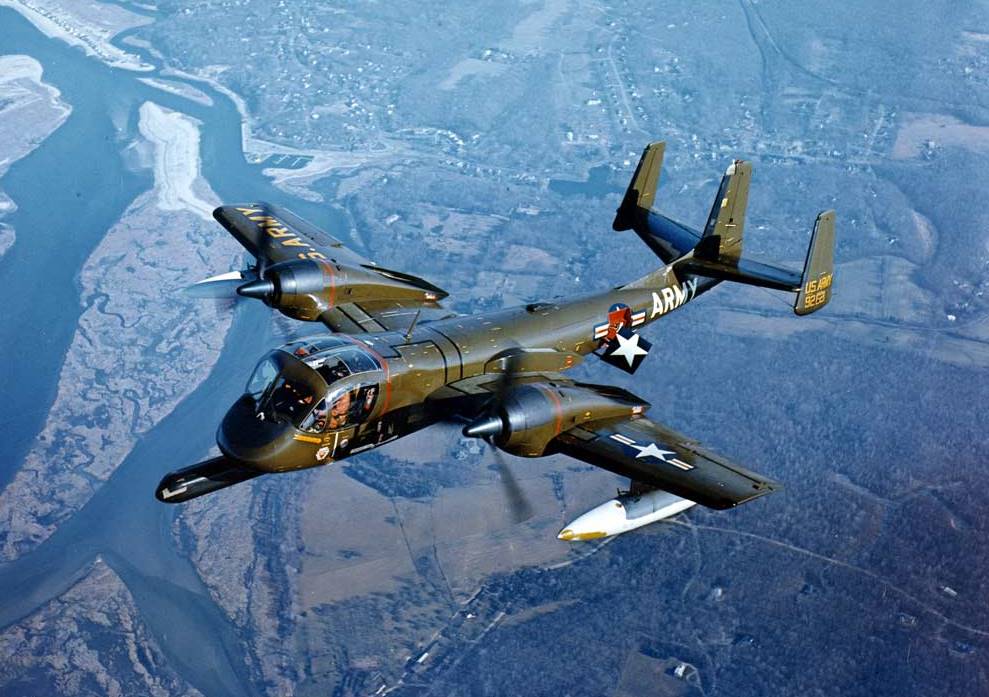
Nobody Was More Surprised Than the Pilot…
The US Army flew all kinds of aircraft in Vietnam. From light observation aircraft to transports and of course thousands of helicopters, the Army flew just about everywhere the Air Force, Navy, and Marines did and lots of places they couldn’t. Despite the aerial victories scored by the other armed services, the Army just didn’t get many opportunities to mix it up with MiGs. But an OV-1 Mohawk somehow achieved the only U.S. Army air-to-air victory during the Vietnam War.

Backstory Alert
Some background: Ken Lee began flying Mohawks with the Army in early 1964 and completed type transition training during September of that year. Ken’s first tour in Vietnam began during November of 1964. During that tour he flew with the 23rd Special Warfare Aviation Detachment (SWAD) and with the 73rd Surveillance Aviation Company (SAC) callsign Uptight. Ken returned home to CONUS at the end of his first tour during November of 1965.
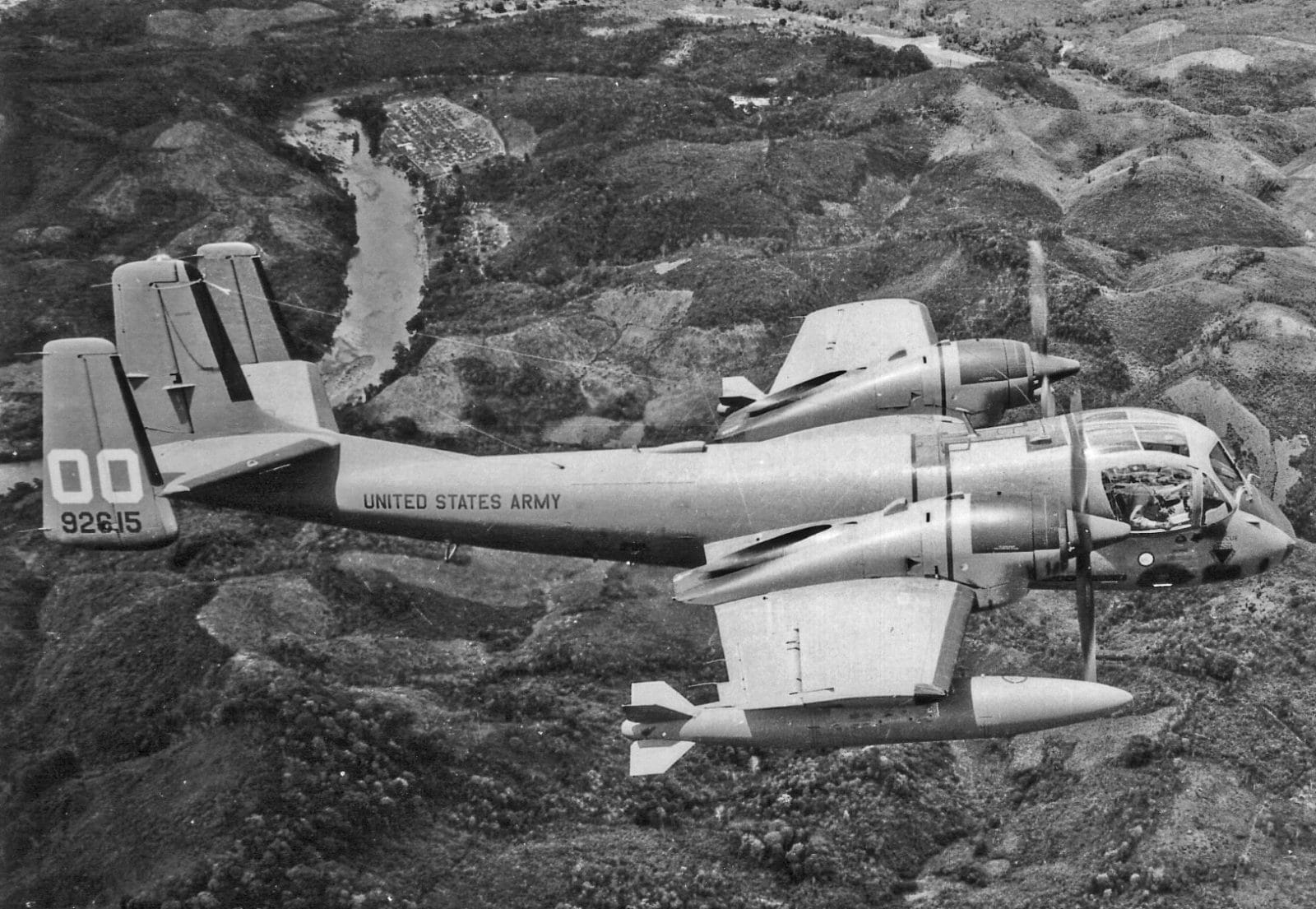
Not His First Go-Round
27 year old Ken Lee began his second tour flying Mohawks in August of 1967. He was assigned to the 131st Aviation Company Nighthawks callsign Spud out of Phu Bai Air Base. Ken (whose personal callsign was Martini) and his fellow pilots flew a mix of OV-1A (visual and photo recon), OV-1B (side looking airborne radar [SLAR]), and OV-1C (Infrared [IR]) Mohawk variants. Their missions during this tour were focused on target acquisition in Laos and southern North Vietnam.
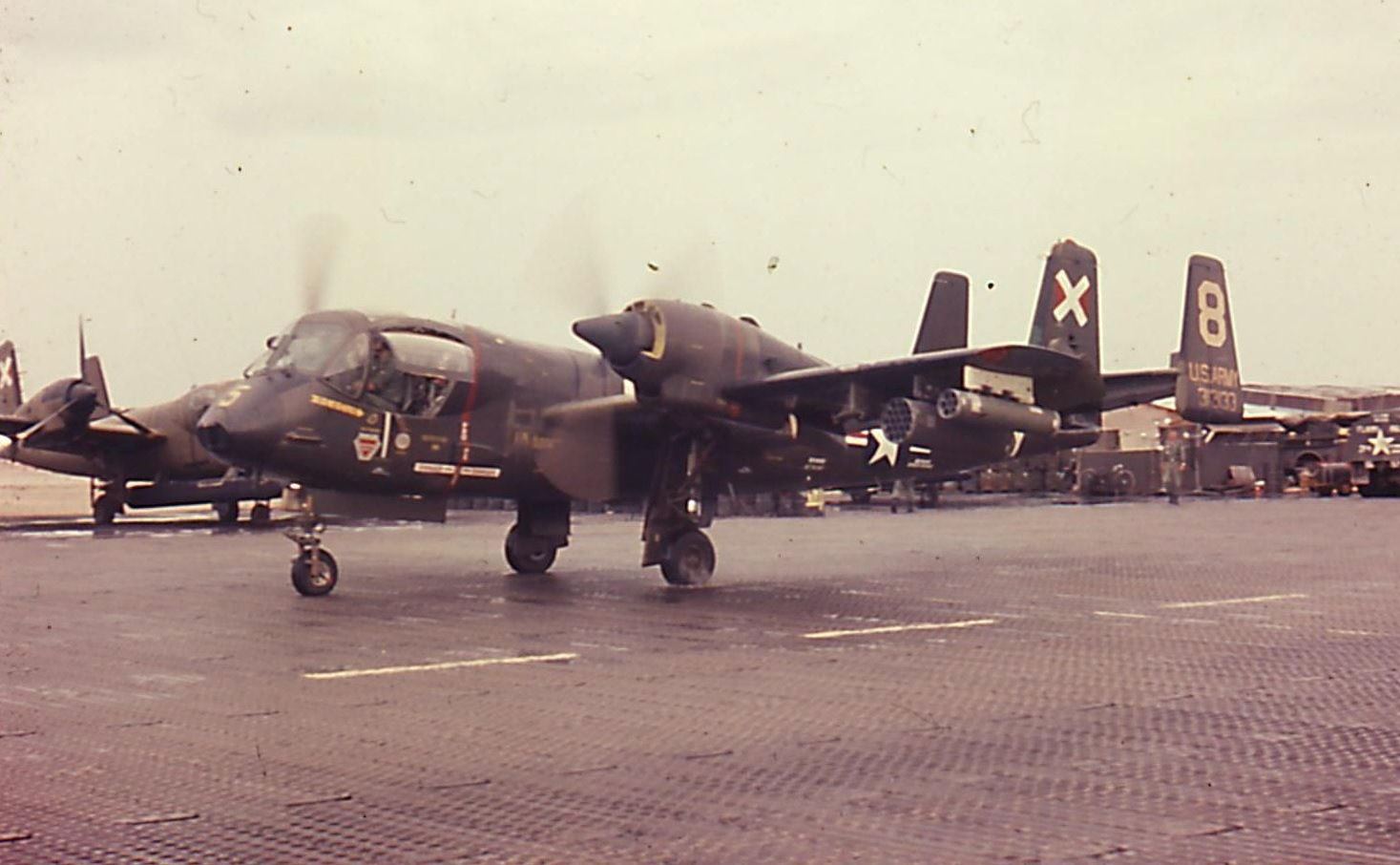
Out of Commission Then Back in the Saddle
Ken had been wounded before his encounter with the MiG. As he tells it, “I was wounded the first of October 1967 at the border between South Vietnam and Laos. A .51 caliber round came through the side skin of the aircraft and went through my flak jacket, damaged my .45 caliber side arm, through my survival radio and survival kit. I was next in the bullet’s path. I was not able to fly again for three weeks and the MiG incident came on about the second mission I flew after I began flying again.”
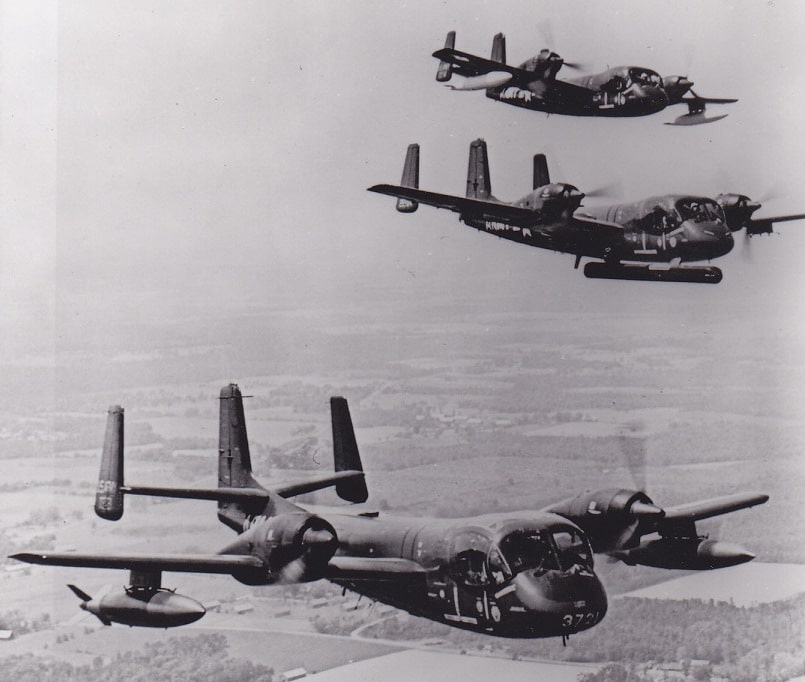
That Dreaded Valley Again
Ken and another Mohawk pilot were transiting to Laos above South Vietnam’s A Shau valley, located just south of the DMZ and close to the Laotian border. Air Force Major Bernie Fisher flew a heroic rescue mission in that valley, landing under heavy fire to pick up a downed pilot. A Shau was still and would remain a hotbed of North Vietnamese and Viet Cong activity. It was up to the two Mohawks, using their infrared (IR) and other sensors, to try and get the gouge on enemy activity west of the area.
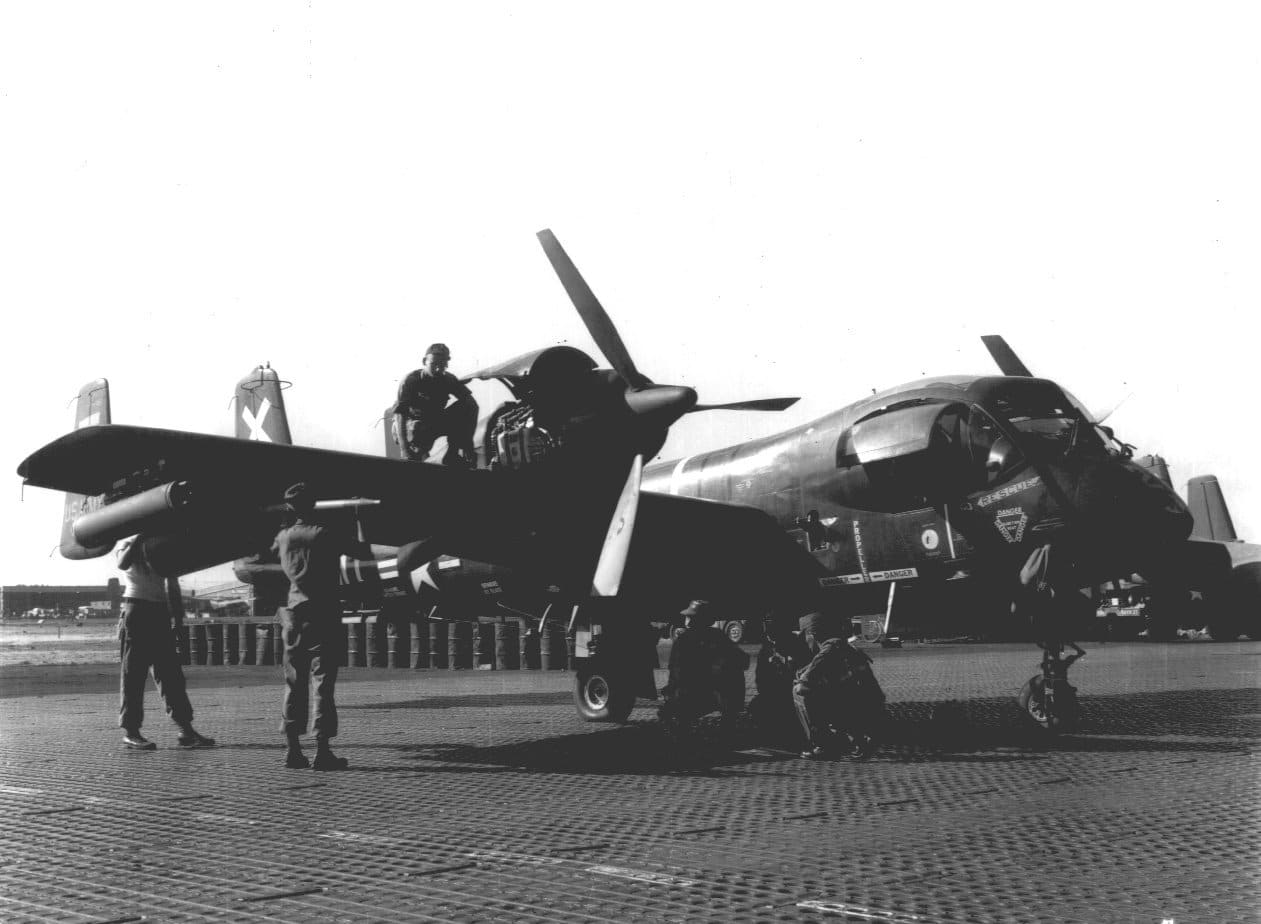
Instinct Takes Over
Flying just a couple of thousand feet above the valley floor with low ceiling and heavy clouds overhead, Captain Ken Lee’s Mohawk was suddenly “bounced” by a North Vietnamese MiG-17 Fresco jet fighter. The MiG scored hits on Lee’s empennage and rear fuselage but overshot the relatively slow Mohawks. As the MiG pilot turned to engage the Mohawks again he got in front of the two 19 shot M159 rocket pods with 2.75 inch unguided rockets and two XM14 .50 caliber gun pods mounted on Lee’s underwing racks. Lee realized his best chance to stay alive was to fire everything at the MiG while it was in front of him, and fire (almost) everything he did.
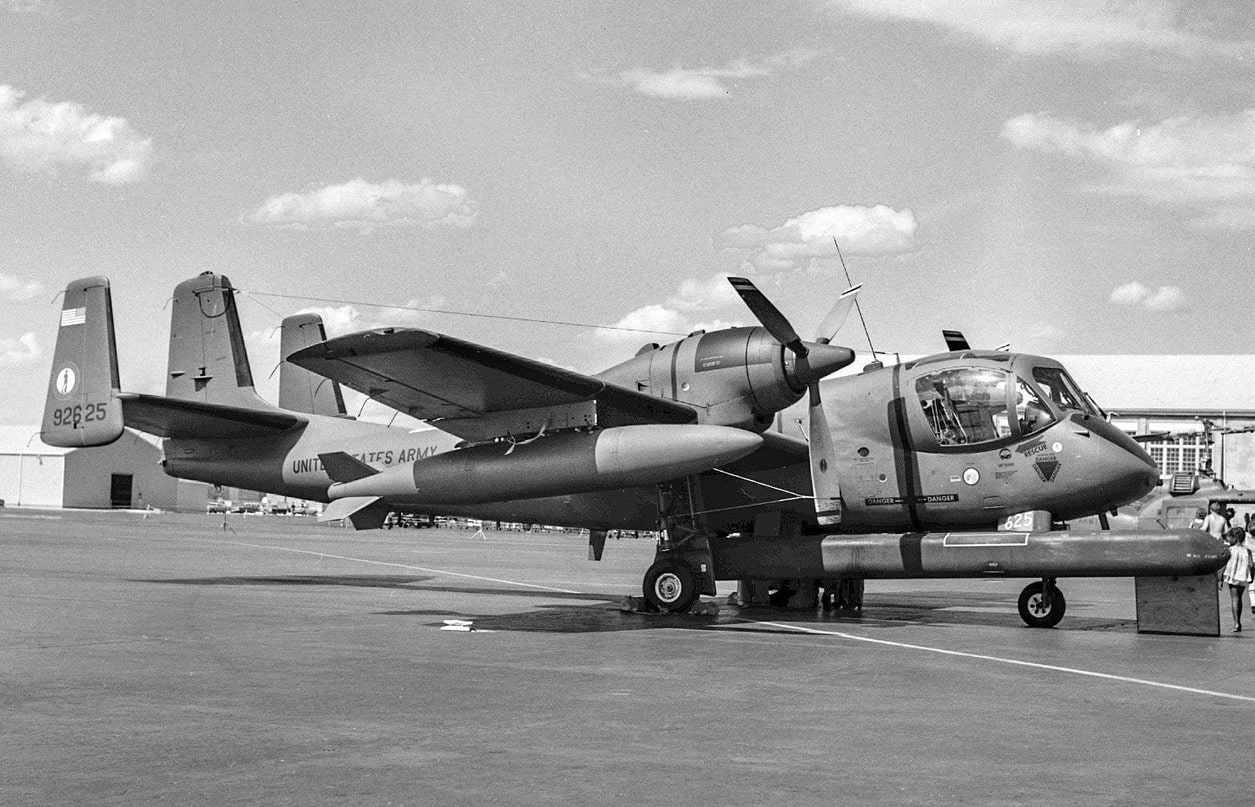

[…] Avgeekery Exclusive: MiG-Killing Army OV-1 Mohawk Pilot Ken Lee […]
[…] reality, the Army kept its fixed wing attack capability quiet, even going as far as to suppress a probable MiG-17 kill by Major Ken Lee — achieved with unguided rockets and […]
Great article and loved the pictures of the OV-1s painted in the original scheme and parked on PSP in VietNam. I flew OV-1Ds in Korea from late 1990 to September 1992. The picture of 256, an RV, was an aircraft assigned to A Company, 3d MI Bn (AE) at Camp Humphreys, Korea. I flew that airplane, albeit not that often. I typically flew SLAR missions on an early Friday or Saturday morning with a take-off time of 0130 or 0200, depending on the mission schedule. The OV-1s were a great aircraft to fly and it was a privilege and honor to do so. I completely agree with Ken’s observations about low, slow and heavy, as the Mohawk was not forgiving under those conditions. During VietNam, there was no A-10 to provide CAS. The Mohawk was an excellent airframe to conduct this mission. COL Olds and GEN James also served in the Army Air Corps before transitioning to the Air Force in late 1947. As gallows humor is a large part of Army culture, the term “widow-maker” was appropriately applied to this aircraft
[…] In November, 1967, over the A Shau valley of South Vietnam, a pair of U.S. Army OV-1A Mohawks were searching with infrared (IR) equipment for Viet Cong in the jungle below. Each OV-1 had a crew of two: pilot and co-pilot. Captain Ken Lee was the senior officer and most experienced Mohawk pilot. This was his second tour of duty in Vietnam. On a mission a few months prior, Lee had been hit in the side by a .51 caliber bullet fired from anti-aircraft guns. The bullet penetrated his flak vest, survival kit, and damaged his side arm. He’d spent weeks recovering from the injury before returning to duty. Being a target for enemy ground forces comes with the territory when you fly a plane meant to fly low and slow. The OV-1 Mohawk was designed to be an advanced observation, surveillance, and light ground attack aircraft. The GIs on the ground loved it because it could come to their aid quickly, firing at enemy troops in close combat situations. The OV-1 could carry weapon pods on underwing racks, including unguided 2.5 inch air-to-ground missiles and .50 caliber machine guns. The Mohawks were cruising at a slow 170 knots, conducting their IR scan of the jungle, when Lee suddenly felt and heard the airframe hammered with bullets. “You got a MiG behind you!”, shouted his wingman over the radio in the other OV-1. The Mohawks were never meant for air-to-air combat. Although they were capable of acrobatic flight, the were no dog fighters. The pair of observation planes were outmatched by the lone MiG and in serious trouble. Lee ordered his wingman to break south, hoping that by splitting up at least one of them would survive this encounter with a killer.The Mig-17 overshot Lee’s aircraft. The Soviet-designed fighter was capable of speeds up to 618 knots (711 mph) but had slowed down to about 275 knots in order to fire on the slow moving targets. That was the MiG driver’s first mistake. Overconfidence was his second.The MiG turned to circle around and attack again, but in doing so he turned right in front of Lee’s fully armed Mohawk: mistake number two. In that instant Lee realized he had just one opportunity to survive. He fired most of his 38 air-to-ground missiles in two salvos, and raked the MiG with 100 rounds from the machine gun pods. Lee could see four of his missiles hit, and .50 cal. tracer rounds raking the fuselage of the MiG. The jet was on fire, and Lee watched it head down into a small valley that was socked in by clouds. Although he couldn’t see the MiG any longer, it seemed likely that it crashed. He just couldn’t be sure.One of Lee’s duties was to brief Air Force officers on the ground targets found by his Army unit, the 131st Aviation Company. USAF Colonel Robin Olds mentioned to Lee that he’d heard through the grapevine that a Mohawk had shot down a MiG, and wondered if it was true. Lee told him it was, and how it happened. The next time they met, Olds invited Lee to the Officers Club at the Air Force base. Olds was commander of the 8th Tactical Fighter Wing, and fighter pilots were waiting for Lee at the club. Once there, Olds told Lee that he had secretly confirmed the downing of the MiG, and put Lee in a “MiG Sweep”, a kind of initiation ceremony fighter jocks do to celebrate a fellow pilot’s achievement of downing an enemy jet. Food and drinks were on the house and the Air Force treated U.S. Army Captain Ken Lee as one if their own.(Note: most articles indicate this incident occurred in February of 1968, but that date is incorrect). […]